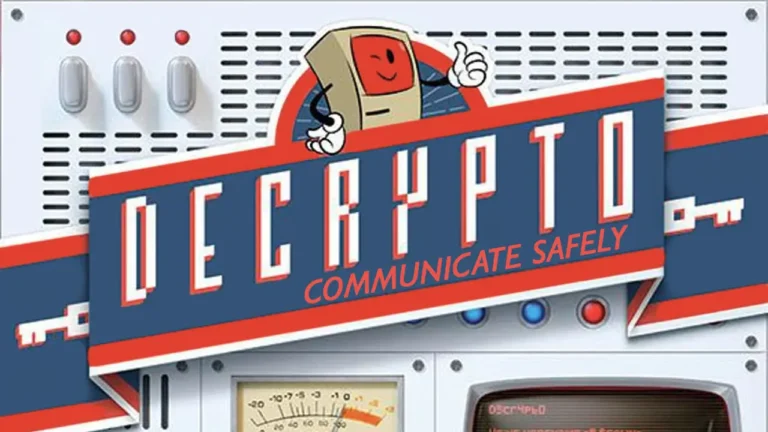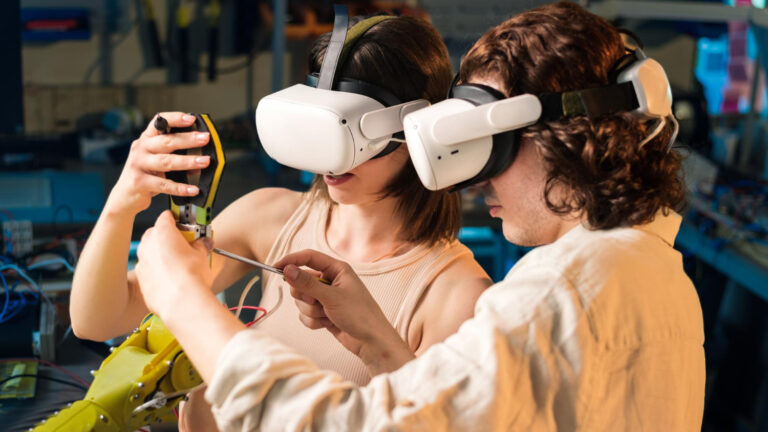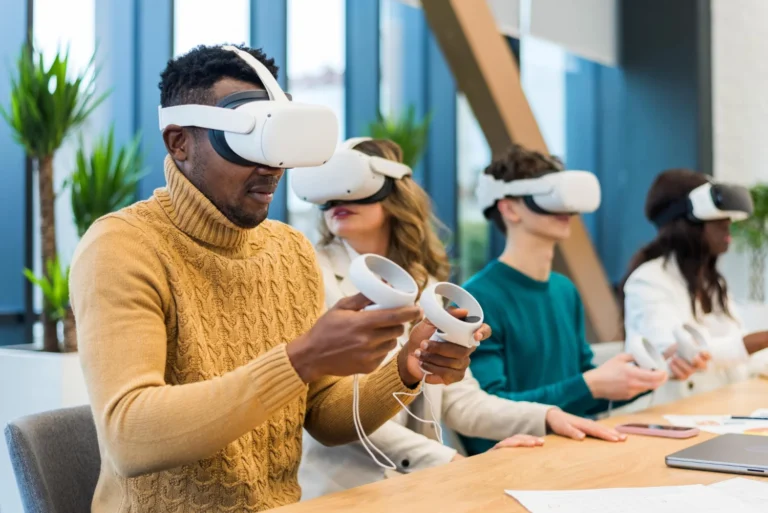The first interactive robotics game, “Robot Odyssey,” was released in 1984. Since then, the popularity of robotics games has increased among children and adults. These games are entertaining and provide a unique learning experience for players.
The growing robotics industry has countless applications. These applications span various fields, such as medicine, manufacturing, and space exploration. You can join this exciting industry and bring your ideas to life by learning to code and control robots.
The Basics of Coding
Coding is a set of instructions guiding a computer or robot on what to do. It involves creating algorithms, which are step-by-step procedures for solving a specific problem. Robotics is the branch of technology that designs, creates, and operates robots. Robots are machines that can do various tasks independently or with human help.
Coding and robotics include languages and platforms like Python, Scratch, Arduino, and Raspberry Pi. These tools assist you to write code and control different types of robots. You will learn about simple line-following ones and complex humanoid models.
Why Learn Coding Through Interactive Robotics Games?
Learning how to code can seem daunting for beginners. That’s where interactive robotics games come in! These games provide a fun and engaging way to learn coding.
Through these games, you’ll see your code come to life. You can control robots and complete various challenges. It helps to make the learning experience more immersive and efficient. It would be easier to grasp and apply coding concepts in real-world scenarios.
Types of Interactive Robotics Games Available
Gaming has evolved from simple games to advanced virtual reality experiences. Interactive robotics games are among the most exciting advancements in this field. Some of the popular interactive robotic games are:
Coding puzzles
These games use basic coding concepts to solve puzzles and complete challenges. They often have colorful graphics and engaging storylines to make learning more enjoyable. Some popular coding puzzle games include Scratch and LightBot.
Virtual reality games
These games use VR technology to create immersive experiences for players. They often involve simulated environments and scenarios to make players feel adventurous. Popular virtual reality games include Beat Saber, Superhot VR, and Job Simulator.
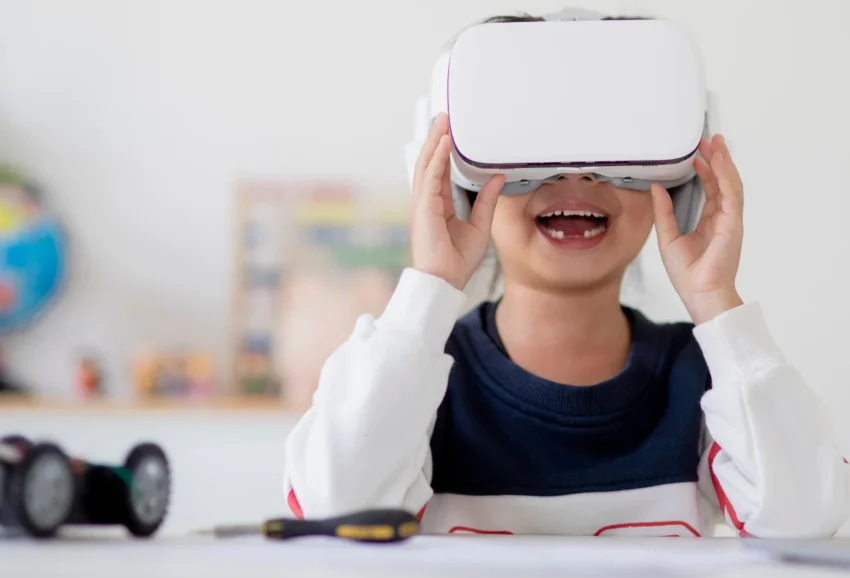
Augmented reality games
These games use AR technology to enhance the player’s real-world experiences. AR games can be approached through a mobile device or special glasses. These special glasses overlay digital graphics onto the real world. Popular AR games include Pokemon Go and Harry Potter: Wizards Unite.
Educational games
These games use interactive gameplay to teach specific subjects or skills. They can cover various topics such as coding, math, science, language learning, and more. Popular educational games include Minecraft, Duolingo, and Prodigy.
Social robots
These are physical robots designed for social interaction and entertainment. They may have human-like features. These robots can respond to voice commands or gestures. Popular social robots include Jibo, Cozmo, and Sphero.
Competitive robotics
This involves building and programming robots to complete tasks or compete against other robots. Popular competitive robotics events include the FIRST Robotics Competition, Robot Wars, and BattleBots.
Virtual assistants
AI-powered virtual agents can assist users with scheduling appointments and answering questions. Popular virtual assistants include Siri, Google Assistant, and Amazon Alexa.
Chatbots
These programs simulate conversations with human users through text or speech. They can serve various purposes, such as learning, entertainment, and information retrieval. Popular chatbots include ChatGPT, Google Bard, Replika, and Xiaoice.
Mobile games
These are games designed for mobile devices like smartphones and tablets. These games act as stress removers, and players enjoy playing. Popular mobile games include Candy Crush, Angry Birds, and Clash of Clans.
How Interactive Robotics Games Teach Coding Skills
Interactive robotics games can teach coding skills in several ways:
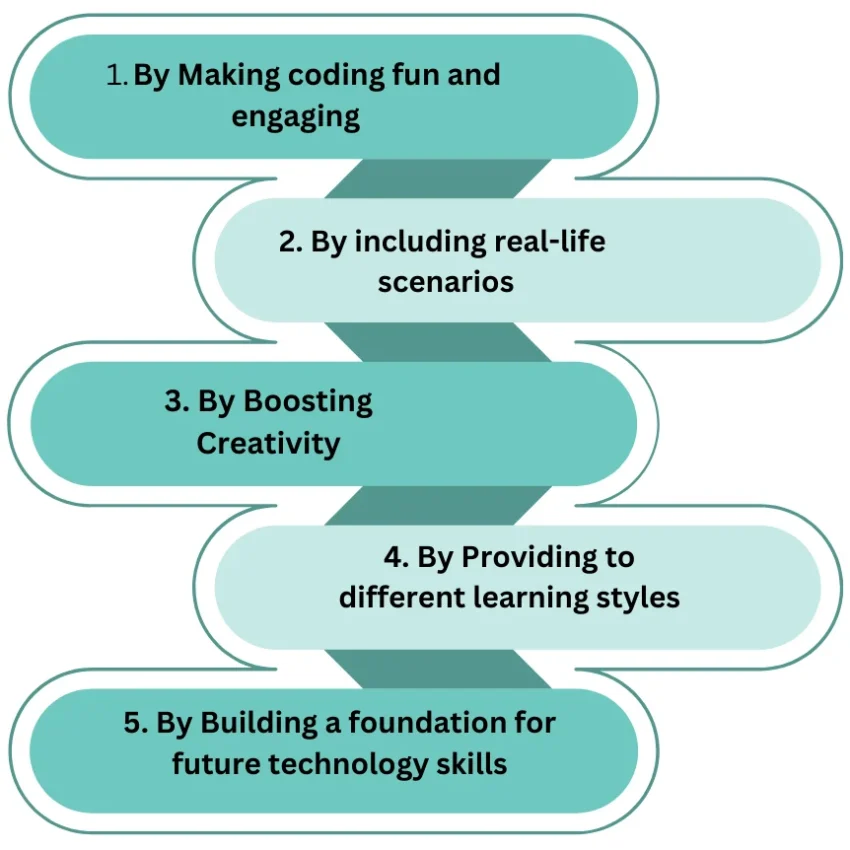
By Making coding fun and engaging
Coding is often a tiring and boring task, especially for children. But, interactive robotics games make learning to code fun and engaging. Incorporating game-like elements into the learning process helps students stay interested. It also motivates them to remain engaged in their studies.
By including real-life scenarios
Developers create many interactive robotics games around real-life scenarios. It makes coding more relatable and applicable for students. Students can better understand by creating a connection between coding and real-world situations.
By Boosting Creativity
Interactive robotics games offer customization options for students to design their robots. So they can create unique game levels using coding concepts. It encourages students to think out of the box by applying their coding skills.
By Providing to different learning styles
Interactive robotics games provide various learning styles. All students have different ways of learning. Learning styles include visual cues, audio instructions, and hands-on activities. These games provide diverse learning methods for a broad audience.
By Building a foundation for future technology skills
The interactive robotics games can lay the foundation for future technology-related careers. Introduce students to coding at a young age through fun and interactive means. They will be more interested in pursuing further studies or careers in this field.
Interactive Robotics Games in Classroom
Interactive robotics games engage students in learning activities in the classroom. These games can engage students who struggle with traditional teaching methods.
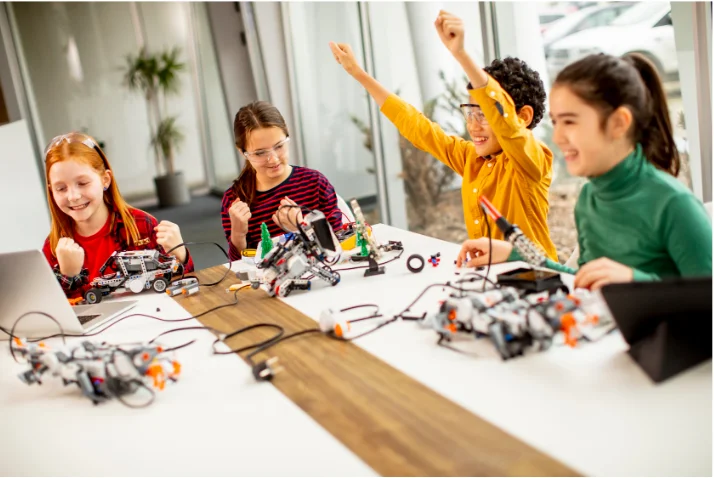
With interactive robotics games, teachers have various options to choose from. They can provide visual, auditory, and kinesthetic games to learners. This will enhance student’s understanding and make the learning experience more exciting.
The use of interactive robotics games can improve students’ imagination. So they can experiment with different ideas to transform the world.
The integration of coding and robotics education
Coding is creating & designing software programs using a set of instructions or code. This skill has become popular in today’s job market. Many industries rely on technology and software, contributing to its increasing demand.
Robotics education is also gaining popularity as an important field of study. Robotics involves designing robots and computer systems. It also involves sensory feedback and information processing. Integration of coding and robotics education allows students to learn how to code. Building and programming robots help to apply coding skills in the physical world.
The Future of Coding and Robotics Education
The future of coding and robotics education is bright. As technology advances, the approach should be to learn these skills. We can prepare the next generation by promoting diversity, inclusivity, and interdisciplinary applications.
It is our responsibility to ensure that these fields are accessible to all. Doing so can create a fairer and more innovative future for all. So, we must continue to invest in coding and robotics education. It is beneficial not only for individuals but also for society.
Short Overview
- Evolution of Interactive Robotics Games: The journey began with the 1984 release of “Robot Odyssey.” It captivated children and adults.
- Coding as the Backbone: Various languages and platforms such as Python, Scratch, Arduino, and Raspberry Pi serve as tools for coding. They act as the backbone for controlling robots.
- Learn Coding Through Games: Learning coding through interactive robotics games is helpful. Making it more accessible and enjoyable for learners.
- Various Interactive Robotics Games: Include coding puzzles, virtual and augmented reality games, educational games, competitive robotics, virtual assistants, chatbots, and mobile games.
- Teaching Coding Skills: Games teach coding by making it engaging, incorporating real-life scenarios, boosting creativity, providing different learning styles, and laying a foundation for future technology skills.
- Classroom Impact: In the classroom, interactive robotics games improve traditional teaching methods, engaging students and broadening their imagination.
- Integration of Coding and Robotics: Integration of coding and robotics education ensures ongoing investment, leading to a more innovative future for individuals and society.
- Future of Coding and Robotics Education: The future emphasizes diversity, inclusivity, and interdisciplinary applications, preparing the next generation for a technologically driven world.

